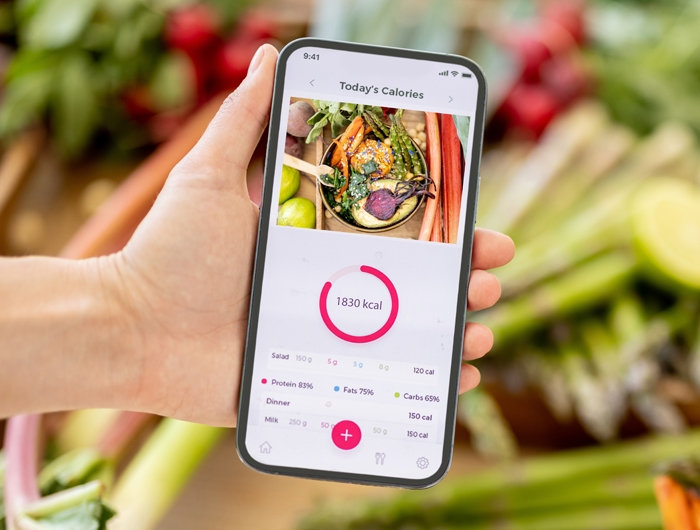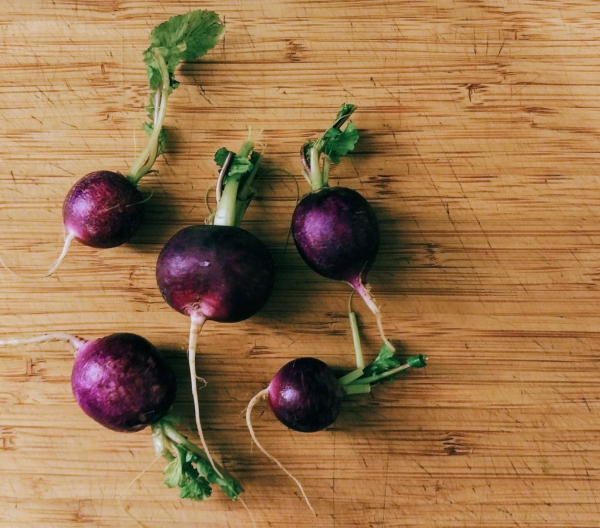Our guide to food-tracking apps

rh2010 - stock.adobe.com.
This article is free for a limited time. Subscribe to access every article and recipe.
Counting calories to lose—or not gain—weight? As they say, there’s an app for that. In fact, there are many. But food-tracking apps like MyFitnessPal aren’t just for calories. They can also tally how much sodium, protein, and sugar you eat. To match your app to your goals, here’s what to consider.
1. How many calories do you need?
Don’t ask just any app. Most set a calorie budget for you based on equations that roughly predict your daily calorie burn based on age, sex, weight, physical activity, etc.
Instead, get a reliable (though still ballpark) estimate at niddk.nih.gov/bwp. It’s based on work by Kevin Hall, a top weight researcher at NIH.
Over time, there’s an even better way to find your number: Track how many calories you eat and see whether your weight changes.
2. Exercise isn’t exact.
Some apps adjust your calorie budget based on workouts you log or activity you sync from an Apple Watch or Fitbit.
Just keep in mind that activity trackers are often imperfect. And if you’ve included your usual activity in estimating your calorie budget (see No. 1), don’t double count.
3. How much are you eating?
Apps (and labels) suggest a default serving size for every food, but you may eat more or less than that.
How much to log? Whip out the measuring cups, spoons, or an inexpensive kitchen scale to check your serving sizes of foods like cereal, pasta, ice cream, peanut butter, chips, nuts, etc. (Bonus: A scale is also great for doling out precise amounts of ingredients for baking.)
And don’t forget to tack on extras—like oil or butter—that you use to cook vegetables, grains, etc.
4. Use “checked” data if possible.

Some food items—in apps like MyFitnessPal and Lose It!—are marked with a check. That means they’ve been reviewed by the app’s team, so their numbers are more likely to be correct and complete.
“Complete” means an item includes data for at least the typical nutrients you’d find on a Nutrition Facts food label, like saturated fat, protein, sodium, fiber, calcium, etc.
If you want to track vitamins or minerals that aren’t usually on the label—like folate, vitamin B-12, or magnesium—you’ll have better luck with Cronometer.
Just remember that if you log food items that are missing data for a nutrient, you won’t know if you’re getting enough—or too much—of it.
5. It’s still not easy to track added sugar.
Many apps only tally “sugar” (total sugar), even though “added sugar” and its percent Daily Value are now listed separately on nearly all Nutrition Facts labels.
Some apps also include their own daily recommended target or maximum for “sugar.” Ignore it. Health authorities only recommend limiting the sugar that’s added to foods, not the sugar that occurs naturally in fruits, vegetables, and milk.
6. To track a restaurant food, be realistic.
If you’re at a chain restaurant, you can probably find what you’re eating in the app’s database (or find the nutrition information on the chain’s website and create the item as a “custom food” in your app).
If you’re at a non-chain restaurant, pick similar items from a chain restaurant, not the Nutrition Facts for similar packaged foods, which have smaller servings than restaurant foods.
7. Play the long game.
If you’re tracking calories because you’re watching your weight, sodium because you’re keeping tabs on your blood pressure, or something else, a single day’s data doesn’t really matter.
Instead, keep an eye on averages over time. Some apps let you average a recent week’s worth of your data for free, but many require a paid subscription to track averages and trends over weeks or months.
8. Be skeptical.
Some apps track “net carbs” you wouldn’t find on a Nutrition Facts label, assign foods a proprietary nutrition score, or offer up iffy diet advice of their own.
When apps go beyond tracking, take their tips with a grain of salt.
For example, some apps flag when you’ve gone above the limit they’ve set for “fat.” Yet total fat doesn’t matter. Only saturated (unhealthy) fat does.
9. Make it easy on yourself.
Tracking what you eat over time isn’t easy, so use timesavers:
Barcode scanning

Most apps let you scan a product’s UPC code to instantly match it to the (usually) correct item in their database. Voilà! The downside: Many apps only include that feature in their paid version.
Recipe importer
Many apps let you paste in an online recipe’s web address to automatically import its ingredients, so it’s easier to track. (That saves time, but eyeball the data for errors.)
Custom foods or meals
Got a go-to lunch salad or sandwich? Create and save it as a “custom” item so you can log it with a single tap.
Bigger screens
Check for an iPad or desktop (website) version of your favorite app. Some are easier to navigate, faster to type and search, and come with more features than the phone app. And they typically have a single login that lets you seamlessly switch from tracking on your phone to your computer.
10. Try before you buy.
When it comes to features like barcode scanning, recipe importing, and averaging nutrients over time, apps vary. Some include one or more of those features on their free version. For others, you have to pay.
Test out a few apps to see what you need before you pay for a subscription that can cost $40 to $80 per year. Start with our reviews of two of the most popular apps (Lose It! and MyFitnessPal) and one of the most reliable (Cronometer).
Lose It!
Are all data “checked”? No. Only some food items carry a check-mark symbol, which Lose It! says means “nutritional information reviewed for accuracy and completeness.”
Are all items complete? No. Checked items are complete for calories, fat, saturated fat, cholesterol, sodium, carbs, fiber, sugar, and protein. Other items range from complete to just calories.

Pros
- The search results include a button you can tap to show only items with verified data.
- It’s easy to swipe and adjust an item’s serving size from the default amount and unit to what you’re actually eating. And you can see its nutrition information update in real time.
- The “Serving Size Guide” helps you size up your portions of tricky foods (like pasta, rice, chicken, nuts, or cheese) by comparing them to a deck of cards, baseball, dice, etc.
Cons
- You can’t track vitamins, minerals, or added sugar.
- The barcode scanner, recipe import feature, and ability to average nutrients long term (more than a week) come only with a paid subscription.
- You can’t customize your calorie budget without a paid subscription.
Bottom line
Lose It! is a user-friendly app worth trying if you’re mostly interested in tracking calories.
MyFitnessPal
Are all data “checked”? No. Only items with a check-mark symbol are. “We do our best to ensure the nutrition information for foods accurately reflects nutrition information from the product packaging,” says MyFitnessPal’s website.
Are all items complete? No. Checked items are typically complete for calories plus the nutrients you’d find on a Nutrition Facts label, except for added sugar and vitamin D. Other items range from those nutrients to only calories.
Pros

- The search results include a button you can tap to show only items with verified data.
- Got a breakfast or lunch on repeat? The food diary prompts you with an option to re-add recent meals with a single tap.
- The app lets you customize your calorie budget and other nutrient goals.
Cons
- You can’t average nutrient intakes long term (for more than a week).
- The barcode scanner only comes with a paid subscription.
- You can’t track most vitamins (other than A and C) and minerals (other than calcium, iron, potassium, and sodium).
- Its “projected weight loss” estimate, which is based on calories consumed vs. burned in just a single day, is worthless.
- Its suggested limit for total sugar is worthless. (Experts only recommend limiting added sugar, which the app doesn’t track.)
Bottom line
MyFitnessPal has a few free features you won’t find in other apps...but keep its cons in mind.
Cronometer
Are all data “checked”? Yes! “Every user submitted food is reviewed by our curation team before being added to the database,” Cronometer explains.
Are all entries complete? The number of nutrients depends on the type of item. Cronometer tags each with a shorthand for its data source. That tells you how complete it is:
Tags like NCCDB or USDA identify the most-complete, lab-analyzed data. (The NCCDB items come from a comprehensive food database used in nutrition research.)
Tags like CRDB or Trustwell identify data for nutrients you’d find on a Nutrition Facts label or more.

Pros
- A row of headings for the search results makes it easy to jump to what you need: “common” for generic whole foods (like fruits, vegetables, etc.), “brands” for packaged foods, “restaurant” for chains, etc.
- The barcode scanner feature is free.
- The app includes added-sugar data for some foods. That’s better than what most other apps offer.
- The app is transparent about missing data, so you know exactly what you are—and aren’t—tracking reliably. Each item notes the number of nutrients listed (see photo).
- In the web version (at cronometer.com), you can hover over a day’s total for any nutrient to see a “data confidence score” that tells you what percent of the foods you logged have complete data.
Cons
- Ads in the free version are distracting.
- You can’t organize your food log into meals and snacks without a paid subscription.
- You can’t import recipes without a paid subscription.
- You can’t track averages for more than the past week without a paid subscription.
Bottom line
Cronometer is the most reliable free app we found, and it’s your best bet for tracking vitamins and minerals.
Support CSPI today
As a nonprofit organization that takes no donations from industry or government, CSPI relies on the support of donors to continue our work in securing a safe, nutritious, and transparent food system. Every donation—no matter how small—helps CSPI continue improving food access, removing harmful additives, strengthening food safety, conducting and reviewing research, and reforming food labeling.
Please support CSPI today, and consider contributing monthly. Thank you.

Let's stay in touch
Get our (free) healthy tips
Our free Healthy Tips newsletter offers a peek at what Nutrition Action subscribers get—scrupulously researched advice about food of all kinds, staying healthy with diet and exercise, and more.

